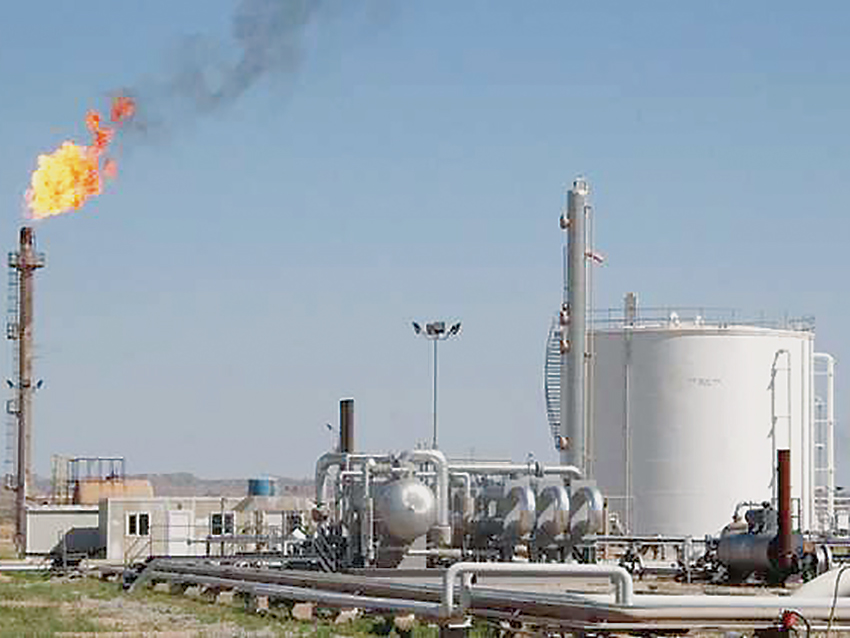

By Conrad Prabhu — MUSCAT: April 3 - Non-Opec producer Oman will back an extension of global oil production cuts beyond June if the move helps bolster international oil prices, according to a top official of the Ministry of Oil and Gas. Salim bin Nasser al Aufi, Under-Secretary, said the Sultanate has long championed output cuts as a means to rebalance oil markets and help prop up prices — a position it has held ever since the collapse of global prices in late 2014. It would continue to support a rollover of the output reduction arrangement reached by Opec and non-Opec members last November and which is due to come up for review in June this year, he said.
“We have been a strong advocate of global production cuts to try and balance supply and demand, and His Excellency (Dr Mohammed al Rumhy) has voiced Oman’s support for this position several times in the past. We all know about the historic agreement reached last November by Opec and non-Opec producers to curtail production by 1.8 million bpd. “Oman’s share of the cut is 45,000 bpd, which is shared on a percentage basis among all our producers,” Al Aufi said. Affirming the Sultanate’s backing for the move, the under-secretary added: “We support any initiative that sustains and grows the oil price. If that means extending the current agreement beyond the current six months, we will not impede this, but we need to know the details, how long it’s going to continue, and so on.”
Speaking at the Annual Media Briefing 2017 hosted by the Ministry of Oil and Gas on Monday, Al Aufi however stressed that the Sultanate, while complying fully with the terms of the output cut, will not be limiting exploration and development activities during this period.
“In terms of its implementation for the first six months of this year, the message is very clear: we will comply with the production reduction, but we will continue to build our stock level. Activity levels haven’t changed, but have been growing in some areas.
“We are building stock so that if and when the reduction is lifted for any reason, we are willing and ready to return to the 1-million barrels per day production level. But if the production cut is extended, we will continue to comply with our share of the cut – whatever that is as part of the extension.”
The Sultanate is a member of the five-nation joint ministerial monitoring committee that has been tasked with exploring the possibility of prolonging the cuts beyond June.
Having delivered record production levels averaging over 1 million bpd during 2016, the Sultanate has been keen to boost, if not maintain, output levels going forward.
However, following the global production cut agreement reached last year, Oman’s output has been capped at 970,000 bpd for the duration of the agreement.
Before the agreement came into effect, the Sultanate had set its sights on an average production of 1.001 million bpd in 2017, rising incrementally to 1.018 million bpd in 2018. Output is targeted at 1.023 million bpd in 2019, 1.024 million bpd in 2020, said Al Aufi.
Gas production, on the other hand, averaged 95 million standard cubic feet per day (mmscfd) of associated gas and 18.3 mmscfd of non-associated gas in 2016.
Turning to other issues, the under-secretary said that the prodigious volumes of gas due to come on stream from BP Oman’s Khazzan project will help satisfy strong domestic demand growth. Around 1 billion cubic feet (bcf) per day of gas will become available from the Khazzan project by the first quarter of 2018.
“Khazzan gas is already factored into our plans,” the under-secretary said. “We require Khazzan gas to cater for the increase in gas demand in the power sector, for local industries, as well as for the allocation of some of the gas to the Duqm Special Economic Zone when a gas pipeline to Duqm is completed.”
Modest quantities could also be supplied to Oman LNG’s complex at Qalhat to help boost plant utilisation, he noted.
Commenting on the status of the proposed gas pipeline that will supply Iranian gas to the Sultanate, Al Aufi said: “We are continuing the technical work on the project, while the route survey is ongoing. Just like the Iranians, we are keen to make sure the project does see the light but it has its own challenges – technical and commercial. There are no new updates in terms of when the gas line will be in place or when gas will be flowing.”
Asked about reports suggesting that part of the Iranian gas may be supplied to Oman LNG for conversion into liquefied natural gas, the under-secretary noted: “As for whether part of it will be channelled to Oman LNG, it is for the two parties to decide at a later stage, including the private shareholders of Oman LNG.”
Given the pipeline’s destination at Sohar Port, it would be more likely that usage of the Iranian gas will be maximise in the Suhar area, although this would ultimately depend on who the end-users of the gas are. “In any case, it’s too early to talk about customers if we don’t have the project on the ground first, starting with its construction,” he added.
Oman Observer is now on the WhatsApp channel. Click here



